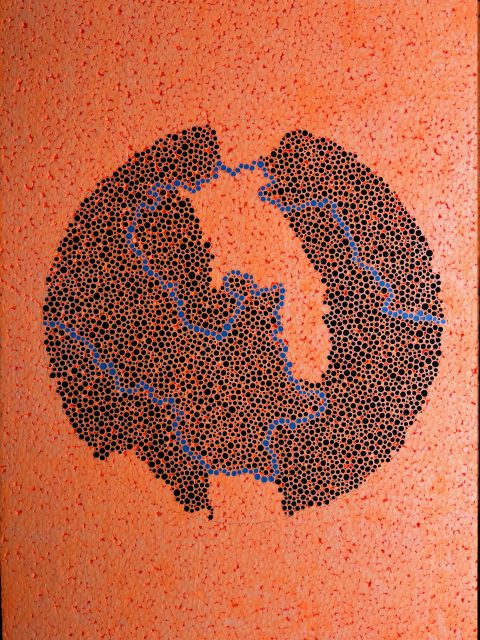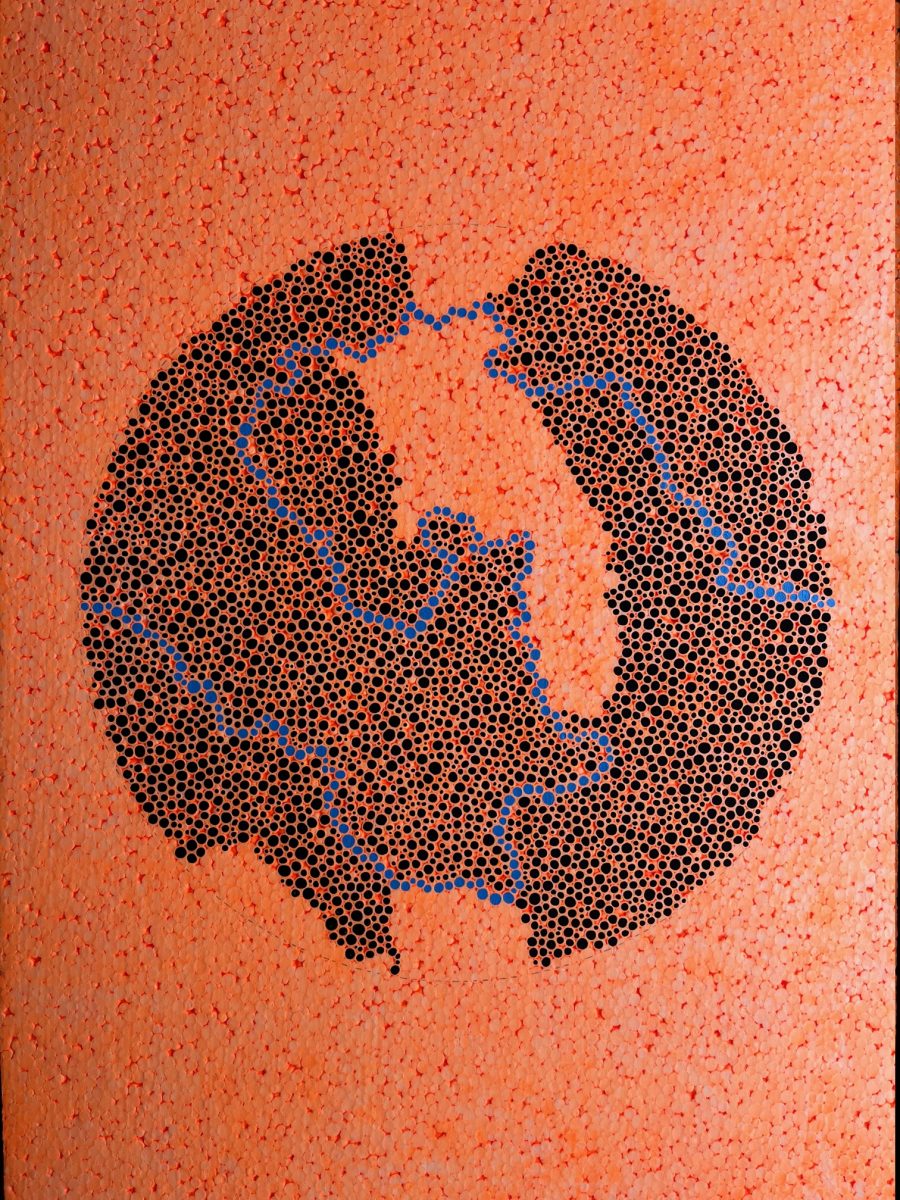
Work in progress shot of ‘Eye Test (Orange)’ (2022) – paint on reclaimed polystyrene
How do you gain or regain motivation?
It is a question I have been thinking about a lot recently for myself and I don’t think I am alone as an artist in knowing how to push through barren periods of creativity, and to keep going even when we face setbacks.
The Highs
I’d had a good, focused month. I’d set myself the challenge to get a piece of work done, involving painting lots of dots on a sheet of polystyrene. Because it’s quite time consuming and a period of intense eye work I’d been putting it off, but with that little push I did it. I worked hard and pushed through and finished on the last day of the month because I’d set myself that challenge and wanted to complete the task.
Cue: euphoria, satisfaction, motivation! “Let’s do this!”
The Lows
A month passed and all the excitement of finishing that piece disappeared, momentum had slumped, my motivation waning. What happened? I guess life happened! Holidays, family / work commitments, DIY, household chores… you know the story. Just through a break of about 10 days I lost some of that creative flow, the next things I was working weren’t exciting me and felt forced. That can easily affect mood and feelings and become frustrating.
5 Things that Help Me
1. Deadlines!
I respond well to having a deadline and setting myself a goal. If I’m not working to a deadline I can waste time, I can dawdle, I can put off those difficult decisions – there’s no urgency.
When there’s a goal to achieve I know what I’m working on and can chip away at it; I don’t need to use loads of energy thinking about it.
2. Realistic and Desirable Targets
Sometimes I can set myself a host of random, unrealistic targets. This generally means I don’t achieve any of them! It’s important for me to set realistic goals and ones that are focused enough and exciting/motivational enough in themselves to compel me to work towards them.
3. External Impetus
Exhibitions (or applications) are a great way to force a deadline on yourself. If you get to show work it brings the work to life, it moves into the space it was designed for (to be seen/experienced) and you get to communicate with others which is so key – to avoid the isolation that is so easily experienced by artists who work primarily on their own.
A real deadline will always help me more than anything else. Work that’s 90% finished has to become 100% finished. Work that looks good sitting on the studio floor has to become work that’s fixed to a wall in a public gallery. Blue tac and masking tape (probably) won’t do the job – more so if you’re handing the work over to a gallery to be hung!
4. Working with Others
In August I showed work as part of a group exhibition with other Artspace studio holders at Arcadia gallery. It was a helpful focus. Being part of that exhibition was great because when you’re showing work, talking about your work, and working alongside other creatives towards a common goal you feel inspired, excited, spurred on.
5. Feeding My Motivation
I’ve just started reading a book called Make Your Art No Matter What by Beth Pickens. It sounds like it will be good to get another perspective on how to overcome things that can get in the way of an artist’s practice. In fact I think I’ll set myself the deadline of reading a chapter a week so I definitely finish it!
I’d be interested to hear from others about their tips for keeping on track with their art work.

